
EDUCATION PACK
Education and Engagement Manager Ben O’Brien-Limmer
Compiled and edited by Grace von Huben
Contributing writer: Anna Richardson
Graphic Design: Georgia Bingham









Education and Engagement Manager Ben O’Brien-Limmer
Compiled and edited by Grace von Huben
Contributing writer: Anna Richardson
Graphic Design: Georgia Bingham







By Bruce Mason, in a company version by Raymond Hawthorne
NARRATOR
Sir Ian Mune KNZM OBE
James Kupa
Gregory Cooper ENSEMBLE
Mark Hadlow ONZM
ENSEMBLE
Alison Walls
Kathleen Burns
DIRECTOR
Lara Macgregor
Sela Faletolu-Fasi ENSEMBLE
ENSEMBLE
Anna McPhail
MOVEMENT DIRECTOR
Hillary Moulder
LIGHTING DESIGNER
Martyn Roberts
ASSISTANT STAGE MANAGER
Tim Bain
COSTUME CONSTRUCTION
Sarah Chisnell
Findlay Currie
ENSEMBLE
Nick Tipa
Reylene Rose Hilaga
SET DESIGNER
Mark McEntyre
SOUND COMPOSER/DESIGNER
Matt Short
OPERATOR
Geoff Nunn
COSTUME DESIGNER
Deborah Moor
STAGE MANAGER
Jo Bunce
PRODUCTION MANAGER
Annie de Senna
PROPS MANAGER
Julian Southgate
SET BUILD MANAGER
Matthew Duffy
COSTUME MANAGER
Daniella Salazar
PROPS ASSISTANT
Rochelle Wright
SET CONSTRUCTION
Seth Edwards-Ellis
Edward Roche
Richard van den Berg
Ted Eason (Photography and Videography), Charlie Jackson of Charlie Rose Creative (Photography), Sarah Rowan (Video Editing), Sandra Roberts of Skip Ink (Publicity), Jamie Boyd (Makeup), Patrice Hammond (Hair & Wigs), Krissy Clark (Scenic Painter) and Dean Holdaway (Technical Support).
Running
The Narrator
The Boy
Reverend Thirle (Northerner)
Miss Effie Brett (Barefooted, huge, rock-faced, like a gigantic ballerina)
Firpo (Thin as a spoon, unkempt, bony ribcaged).
Jesse Cabot (Canadian, Heavyweight champion)
The Brother Mother
Father
Sister
Sergeant Robinson
Man 1
Man 2
Man 3
Woman 1
Woman 2
Woman 3 (Dutch)
Young Dutchman (Hans)
Amy Harry
Auntie Kass
Uncle Jim
Ginger Finucane
Roy Baker
School children
Rioter 1
Rioter 2
Rioter 3
Rioter 4
Rioter 5 (A Scot)
Rioter 6 (Irish)
Mr Johnson
Miss Sybil Brett
Mrs Atkinson
Mr Atkinson
Joe Dyer
Bob Ferguson
Mr Stephen Irons
Butcher
Miss MacKay
Crowd 1
Crowd 2
Crowd 3
Crowd 4
The Man

“You created no mana, no reputation or authority to justify your work. In fact, to most people, it wasn’t work at all, just pretentious frivolity” - Bruce Mason

In 1969 Bruce Mason was interviewed for a television programme celebrating the 500th performance of his original one-person version of The End of the Golden Weather that he came close to performing 1000 times around the country over the previous decade.
In that interview he was asked where he wanted to ‘get’ within the arts and he replied, “I just wanted to feel that I had a calling for theatre and that this calling would at length be recognised, so that I could give my life and best energies to it. But you can’t work in a vacuum. A man won’t write symphonies, if there’s no orchestra to play them.” There was no solid theatrical framework at that time in New Zealand for Bruce – or any other New Zealand professional – to hang their coat on. There was no way for him to build a reputation “…or authority to justify work.” In the eyes of most of the country at that time acting, the arts, was considered “pretentious frivolity”.
Bruce Mason was a renowned New Zealand playwright, best known for his contributions to the country’s theatrical landscape. Born in 1921, Mason’s works often explored themes of identity, social issues, and the human condition, blending New Zealand’s unique culture with universal storytelling. His most famous play, The End of the Golden Weather (1959), is considered a landmark in New Zealand drama, reflecting the nation’s post-colonial experience. The play was originally developed as a solo performance but has been adapted for ensemble. It was workshopped in 1959 and first performed for the public in 1960. The script was published in 1962 and again in 1970 after Mason had performed it more than 500 times, including at the Edinburgh Film Festival in 1963. Sir Ian Mune met Bruce Mason at 19 and watched him perform the show live. He then went on to work with Bruce on the film script and directed the 1991 film version.
Mason’s work earned him a lasting legacy as a key figure in New Zealand theatre, and his plays remain an essential part of the national artistic canon.
Bruce Mason was a pioneer playwright within Theatre Aotearoa / New Zealand Theatre Form and The End of the Golden Weather is a play that sits firmly at the heart of the era he was writing in. Like many plays of the time, it reflects recognisable characters to an Aotearoa audience, social commentary, as well as weaving historical and political events into the narrative. Whether you are using the performance of this play to revise for your Live Performance exam, building a portfolio around it for Level One or discussing it as part of a wider discussion of Theatre Aotearoa / New Zealand Theatre form, you will want to think about why Mason wrote this play and the impact of the play then and now. Use these activities to start your exploration into Bruce Mason and The End of the Golden Weather.
Research: In small groups read “Playwright’s Legacy” and pull out points that you could do further research on. You may want to use the following bullet points as a guide:
• The inspiration for The End of the Golden Weather
• Canon of plays
• Why a one man show, getting The End of the Golden Weather onto the stage
• Recurring themes in Mason’s work
Collate your research to present back to another group or your class. Be creative, you could do your presentation in role, as a power point or series of slides, as a short video or you could take part in a whole class discussion collating all the information into a shared digital folder.
Individual Activity: For homework or as an individual in class activity, respond to the following prompt. You can respond in a way that suits you best; short written essay, voice note, VLOG, sketches with detailed annotations:
Discuss the impact that Bruce Mason has had on theatre in Aotearoa New Zealand. Reference the relevance of his plays over time.

Ian Mune has a unique relationship with The End of the Golden Weather. A major professional highlight was bringing this Kiwi classic to the big screen back in 1991, so reconnecting with the original in his first appearance at The Court Theatre is a special occasion.
Early in his career, Ian chose to return to New Zealand after two years with the Welsh Theatre Company in order to ‘talk my own language’something he’s done with distinction ever since as actor, writer, director, producer, mentor, narrator, and author, earning many awards and much recognition along the way. Sleeping Dogs, Came A Hot Friday, What Became of the Broken Hearted, and the documentary tribute Billy T - Te Movie are just some examples.

James (Ngāti Kahungunu) is a graduate of Toi Whakaari: New Zealand Drama School (Bachelor of Performing Arts). His Court Theatre credits include The Perfumed Garden, Frankenstein, The Girl on the Train, Dance Nation, and Agatha Christie’s Murder on the Orient Express.
His other theatre credits include Betty’s Summer Vacation, Twelfth Night (Toi Whakaari), A Streetcar Named Desire (Circa Theatre), Strange Resting Places (Taki Rua), Penalties, Pints and Pirouettes (Centrepoint Theatre), and Dungeons & Comedians (Little Andromeda).
James’ television credits include Dark City: The Cleaner, The Brokenwood Mysteries, Ka Pai Living, Agent Anna, and Nothing Trivial.

Gregory has been a professional actor, writer and director for over 25 years. His Court Theatre credits include Elling, Les Liaisons Dangereuses, and The Wind in the Willows.
He wrote and directed Mark Hadlow’s one actor show MAMIL (Middle Aged Man In Lycra) and co-wrote That Bloody Woman, a rock musical about Kate Sheppard.
In 2023 he directed his play Mr & Mrs Macbeth for The Professional Theatre Company in Nelson and this returned for a season at The Court Theatre. His latest play MAMIL 2: GOMIL (Grumpy Old Man In Lycra) had a successful season at the Isaac Theatre Royal earlier this year with a nation-wide tour planned.
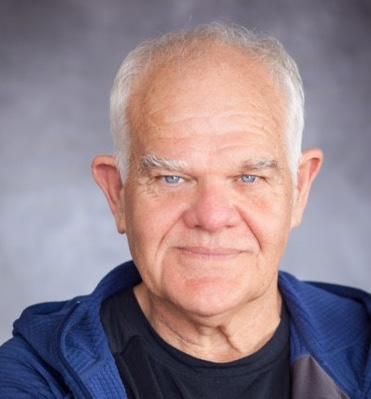
Mark Hadlow, ONZM, is one of New Zealand’s best-known actors, with countless theatre, film, television, commercial, and radio credits. He has directed theatre, opera, and film throughout New Zealand.
Court Theatre highlights include lead roles in Elling and The Father. Other theatre highlights include MAMIL, written by good friend Gregory Cooper and performed over 330 times to more than 70,000 people, and the sequel GOMIL which opened in Ōtautahi Christchurch in February 2025. Film highlights include the Sir Peter Jackson films The Hobbit Trilogy, King Kong, Meet the Feebles, and Mortal Engines; as well as Blue Moon, for which he won Best Actor at the 2024 IPAAF Awards. Mark is also Artistic Director of The Professional Theatre Company in Whakatū Nelson.

Kathleen’s career began at The Court Theatre in 2003 with The Court Jesters, and she still performs in Scared Scriptless. Since then, she has worked the country as an actor, writer and director. She is also a graduate of the National Academy of Singing and Dramatic Art.
Her previous Court Theatre acting credits include Agatha Christie’s Murder on the Orient Express, Educating Rita, The Curious Incident of the Dog in the Night-Time, Ladies Night, Steel Magnolias, The Pink Hammer, RENT, and Sense and Sensibility. Other theatre credits from around the country include A Servant to Two Masters, Under Milkwood, Cinderella, and Treasure Island (Circa Theatre), Avenue Q, Five Women Wearing the Same Dress, and Flagons and Foxtrots (Fortune Theatre). Her screen credits include Sextortion, Ghost Shark 2, The Bostrom Scenario, and Wilbert Wire.
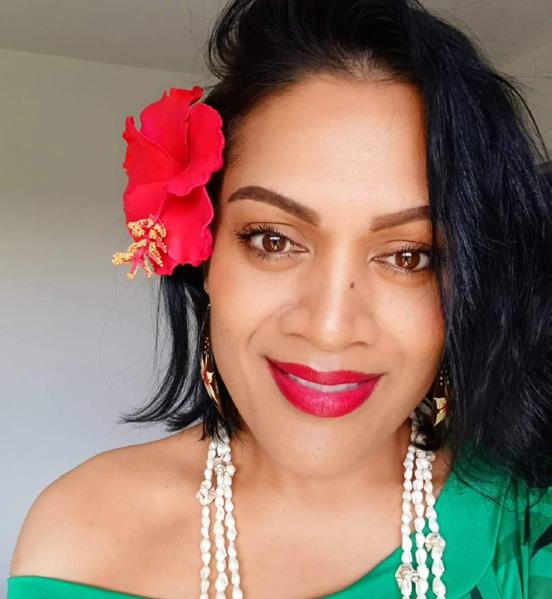
Sela Faletolu-Fasi is a Pacific writer, director, and actor from Ōtautahi Christchurch. Her Court Theatre credits include Matai in 2017 and Fresh Off The Boat in 2019.
Her other theatre highlights include collaborating with The Court Theatre in 2013 to bring No Limits, a Maori and Pacific youth performing arts group that she founded after the earthquake to perform Speak Your Truth to a sold-out audience on the mainstage.
Most recently, Sela has been touring New Zealand early this year with her new play, Love; Mum as the writer/director/producer/actor after a soldout development season in 2024.



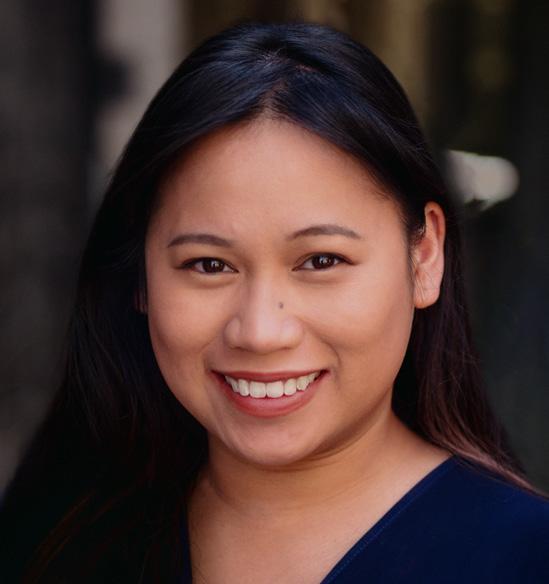
Ensemble
Nick Tipa (Kāi Tahu, Kāti Hāteatea) is a graduate of 16th Street Actors’ Studio (Full-Time Programme). This is his first Court Theatre production. His other theatre highlights include The Complete Works of William Shakespeare (Abridged), The World’s First Lovers, and Romeo and Juliet.
Nick is a writer, having recently written and staged his play Babyface at the Dunedin Fringe Festival. He is also a musician, with original music released under his own name and his band, Laney Blue. For his role as Bottom in A Midsummer Night’s Dream, Nick won a 2023 Dunedin Theatre Award for best actor in a male role.
Alison Walls is a graduate of Sarah Lawrence College (MFA, Acting) and The Graduate Center (PhD, Theatre and Performance Studies). She has directed Katzenmusik (The Court Youth Company) and Dance Nation for The Court Theatre. Her other theatre highlights include Henry V (Wellington Summer Shakespeare), Fuddy Meers (director, BATS, Chapman Tripp Award nominee), When the Rain Stops Falling (Circa Theatre), and Antony and Cleopatra (director, Wellington Summer Shakespeare). Alison’s television credits include Passion in Paradise. Her film credits include The Calf, Poles Apart, and Bone Creek. Alison has performed and directed in Wellington, Chicago, and New York. While living in New York, Alison was a proud company member of New York theatre non-profit The Upstart Creatures.
Anna is a graduate of Toi Whakaari: New Zealand Drama School (Bachelor of Performing Arts) and The University of Canterbury (Grad. Dip. Teaching and Learning). Her Court Theatre credits include Proof, King Lear, Hamlet, and Rosencrantz and Guildenstern are Dead.
She is currently a Drama Teacher at Christchurch Girls’ High School and would like to thank the Principal and the Board, for granting her leave to participate in this marvellous production.
Reylene Rose is a graduate of the National Academy of Singing and Dramatic Art (Bachelor of Performing Arts – Music Theatre). Her Court Theatre credits include The Littlest Ninja, Thumbelina, and Scared Scriptless. Her other theatre highlights include PLAY PLAY (Cubbin Theatre Company), Around the World in 80 Days (Anthony Harper Summer Show), and Dungeons and Comedians (Little Andromeda). Reylene is a member of The Court Jesters and Equity New Zealand, and is an in-house producer at Asian Waves Productions. She is the singer of the track “Backspace…Delete” from Isolation Mixtape Volume 2 (Blackboard Theatre Collective), and is a regular player on the online D&D series Dice Legenz.

Lara works as an actor, director, and performance coach in theatre and film throughout New Zealand. She studied acting in New York City with Uta Hagen and Anthony Abeson and worked for ten years as an actor in the U.S. She holds a Post-Graduate Diploma in Directing from The National Institute of Dramatic Art in Sydney and has directed over 40 productions in the last decade.
In 2009, Lara was appointed Associate Artistic Director at The Court Theatre, then became Artistic Director at Fortune Theatre in 2010. In 2024 she founded her own company, Birds of a Feather, directing Suzie Miller’s global sensation Prima Facie.
Lara is represented by the incredible team at Gail Cowan Management.


Hillary has choreographed productions such as Ladies Night, Once, Flagons and Foxtrots, Next to Normal, Matilda the Musical, That Bloody Woman, Mamma Mia!, Fun Home and more. She has also performed in productions such as Strictly Ballroom the Musical, Chicago, Jesus Christ Superstar, Jersey Boys, Time Machine, Les Liaisons Dangereuses, A Streetcar Named Desire, A Christmas Carol, Matilda the Musical, Beauty and the Beast - The Pantomime, and We Were Dangerous (Piki Films). In addition to this Hillary has directed the enchanting shows Sense and Sensibility, A Flight Before Christmas, Every Brilliant Thing, and Mamma Mia!.
She is a proud member of Equity New Zealand and is truly grateful to be a part of the first production in The Court Theatre’s new forever home.

Mark is best known in the theatre world for his set designs for The Court Theatre, Tawata Productions, Pacific Underground, NZ International Festival of the Arts, Melbourne Arts Festival, Christchurch Arts Festival, Taki Rua Productions, and Auckland Theatre Company. Mark has represented New Zealand in the Prague Quadrennial of Scenography and Theatre Architecture. Mark’s recent designs include O le Pepelo, le Gaoi, ma la Pala’ai (IKENSO/Auckland Theatre Company for the Auckland Arts Festival), Transmission Beta (Circa Theatre), Ngā Rorirori (Tawata Productions, National Tour), Prima Facie (Birds of a Feather), and Dawn Raids (Pacific Underground). Mark is also the Academic Manager of Performing Arts and a supervisor in the Post Graduate programme, Master of Creative Practice, Ara, Te Pūkenga.

Lighting
Martyn Roberts is a multi-award-winning lighting designer and Senior Professional Practice fellow at the University of Otago in Dunedin, NZ. Martyn has been creating award winning light and set designs for several years both here in NZ and overseas.
He has recently designed Commentary of Dreaming for Company Beck, Wahine Mātātoa for Theatreworks, Company (by Samuel Beckett) and the interactive production The Anderson Localisation, all in the 2025 Dunedin Arts Festival. In 2024 he worked with Lara Macgregor and Mark McEntyre on the award-winning production of Prima Facie in Dunedin, starring Serena Cotton. He founded afterburner in 2001, a light and sound collective creating installation/theatre hybrid pieces. He designed the lighting for Peninsula by Gary Henderson for The Court Theatre in 2005.

Deborah has worked in theatre for 25 years, designing and producing costumes for plays and musicals. She has worked for The Court Theatre since 2000, becoming the Costume Department Manager in 2019 and managing for 3 years. Some of her favourite shows have been My Fair Lady, Mary Poppins, Jersey Boys, and many children’s productions including Puff the Magic Dragon and Disney’s Frozen JR. Her design credits include Backwards in High Heels, Glorious, Winston’s Birthday, and Once, amongst others. Deborah has worked nationally and internationally on various projects, creating work for Southern Ballet, Southern Opera, Circo Arts, and Jenny Gillies. She also designed the costumes for Showbiz’s Come From Away this year. Deborah is thrilled to be designing the first show in the new theatre. She feels very privileged to have worked in three Court Theatres.

From the bustling streets of London to the vibrant stages of New Zealand, Matt’s career has spanned the dynamic world of media and entertainment. Beginning as a marketing rep for a major record label, he quickly moved into broadcast television, becoming a senior camera operator for British Sky Broadcasting. Mastering the Radamec and Stanton crane systems, Matt gained invaluable experience in live TV production in the studio and on international assignments. Returning to New Zealand, Matt worked with TVNZ, co-filming, recording sound, and composing music for an adventure guide series, before making his mark as a composer and sound designer.
Matt brings his extensive technical expertise and creative vision as a Technician and Sound Composer/Designer, ready to captivate audiences with his work.

Julian has designed numerous Court Theatre sets including Side by Side by Sondheim, Much Ado About Nothing, Pacific Post, The Women, Amadeus, End of the Rainbow, The Hound of the Baskervilles, Plum, Le Sud, Romeo and Juliet, Exit the King, In the Next Room, or the vibrator play, Hedwig and the Angry Inch, The Wind in the Willows, A Streetcar Named Desire, Sense and Sensibility, Agatha Christie’s Murder on the Orient Express, and A Doll’s House.
His other stage set designs include Cats, Joseph and the Amazing Technicolour Dreamcoat (Showbiz Christchurch), and the national tour of Pinocchio (Royal New Zealand Ballet). Julian has also made props and sculptures for numerous festivals, operas, and outdoor and street theatre.

Jo is a long-term theatre professional with over 30 years of experience in live theatre and film. She graduated from the University of Canterbury with a Bachelor of Arts in 1994 and went on to earn a diploma in Technical Production from Toi Whakaari: New Zealand Drama School in 1996.
Throughout her career, Jo has worked as a stage manager, lighting designer, and operator both in New Zealand and internationally. Her passion for live performance has seen her involved in over 60 productions for The Court Theatre since 1996, where she currently serves as the head stage manager. Some of the highlights of Jo’s career at The Court Theatre include Amadeus, End of the Rainbow, Stephen King’s Misery, Sense and Sensibility, and Agatha Christie’s Murder on the Orient Express.

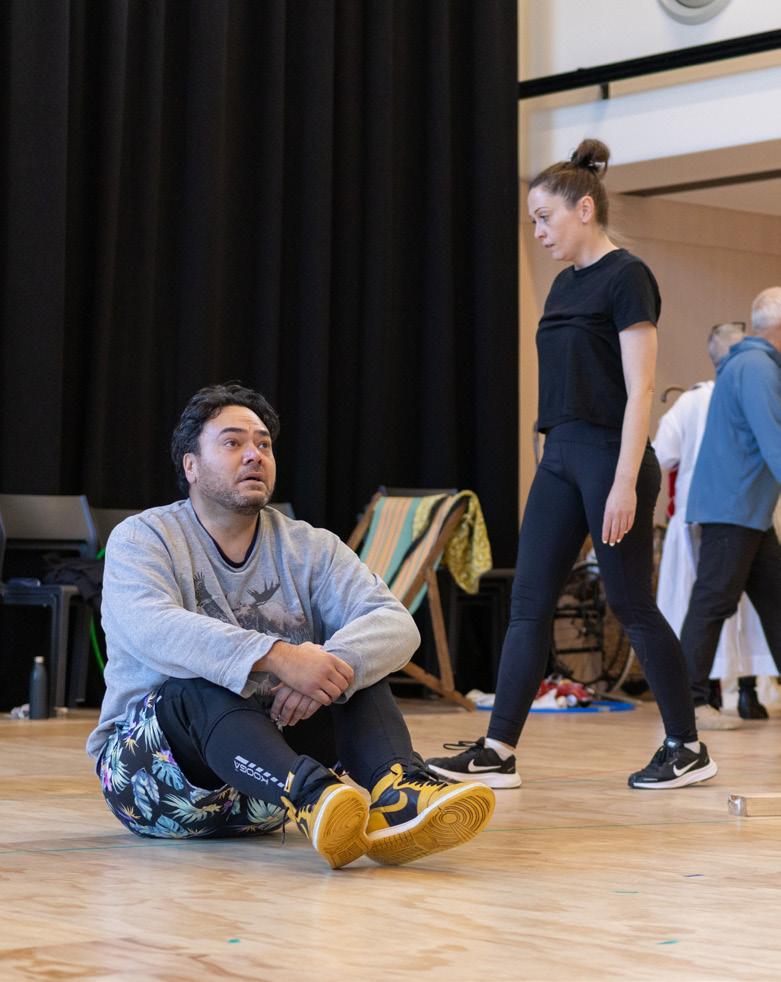



The 1930s were marked by the global economic downturn known as the Great Depression. New Zealand, like many other countries, was heavily impacted by high unemployment rates, poverty, and economic hardship, particularly in rural areas.
The 1930s saw significant social changes in New Zealand, as the country grappled with the effects of the Depression, the growth of labour movements, and the rise of new political ideologies. During this period, the Labour Party gained popularity, advocating for reforms to support workers and the disadvantaged.
This was also an era where New Zealand was developing a sense of national identity, distinct from its colonial past under British rule. This was a period of increasing cultural self-awareness, with movements toward a more localised, authentic expression of New Zealand’s unique character, including in the arts.
The End of the Golden Weather is part of a larger movement in New Zealand theatre during the late 20th century that focused on exploring the country’s unique identity and history. Bruce Mason’s work contributed significantly to a period of New Zealand theatre that dealt with national issues and identity.
The 1991 film adaptation, directed by Sir Ian Mune, took influence from New Zealand’s post-World War II period, which was marked by increasing cultural awareness and the questioning of New Zealand’s colonial past. There was a growing recognition of indigenous Māori culture and the tensions that arose from the impact of European colonization.


How would you describe the ‘world’ that The End of the Golden Weather is set in?
The End of the Golden Weather is set in two worlds. The narrator’s world of now, and his then-world as a boy in 1930’s New Zealand. The ‘now’ world is very simple. Purely the narrator in the theatre speaking directly addressing the audience. I did have an early idea to put the narrator in a radio play scenario to open and close the show, but dropped this very early in the rehearsal process as it became very clear there needed to be no obstacle between the actor, Ian Mune, and the audience.
The ‘then’ world is a world filled with rich memory, eccentric characters, connection to mother nature, and challenging life lessons.
It is a world laced with nostalgia. One of the strongest components that helps build the sense of nostalgia in this world is Sound. Matt Short has composed an incredible mix of original music, soundscape and effects that melds seamlessly with Bruce Mason’s language and imagery.
The relationships between the characters are key to the story. How did you shape the dynamic between them on stage to reflect the underlying themes?
Some of the key themes in the play are: What it means to be a man in New Zealand; Identity; (Toxic) Masculinity; Loss of Innocence, Individuality, Coming of Age, and Memory.
Toxic masculinity is inherent in the script. The boy who is a dreamer, a kind and creative spirit, befriends Firpo, a man with intellectual difficulties. These two characters come
up against local characters that test their mettle in terms of the meaning of what it is to be a man. The writer has trickled this theme all the way through the script. It rears its head in characters such as Uncle Jim, Bob Fergusson, Joe Dyer and Jesse Cabot. As this production has adults playing children and women playing men, and men playing women, we have been doing some physical work - especially for the womenon exploring masculinity. This has included exploring the way men walk, talk etc.
What might a typical rehearsal look like with the cast when creating this production?
A typical rehearsal day starts with a physical and vocal warmup; usually run by our choreographer Hillary Moulder. We hit the floor for the first two weeks, finding the physical pattern of the play, and leaving the detailing of the story until the third and fourth weeks. There tends to be a lot of laughter, a lot of repetition until the map of things soaks in. I’m usually found with a furrowed brow as I try to weave it all toward the ultimate vision which sits in my brain. Casting is the most important decision when approaching any production. I’m so happy with this cast because I cast for the ‘quality’ of personality. It was so important to have an actor like James Kupa who has an inherent sensitivity that serves the boy’s journey. Sir Ian Mune brings a richness to this story that no one else could have. He saw Bruce perform his original one-man version in 1960, then worked for years with Bruce to develop the script for film. This story is entrenched in him, and we have benefitted every day from his shared history and anecdotes about Bruce and his family in the rehearsal room.




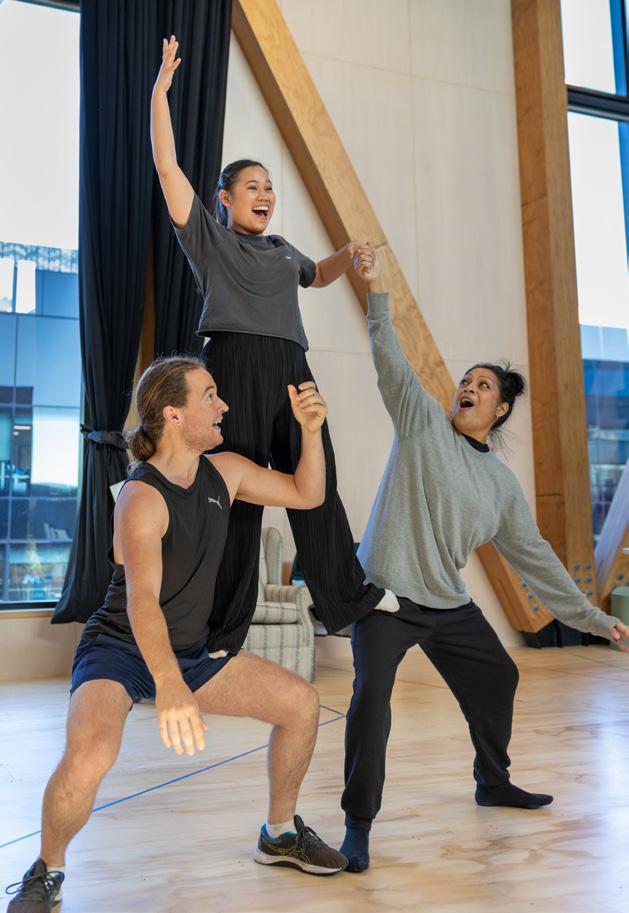



When you are discussing The End of the Golden Weather in the classroom, one of the first areas you will want to dive into is connecting the director’s concept to the performance. Lara Macgregor has outlined in her interview what she has hoped to achieve in her realisation of Mason’s seminal work. Through casting choices that connect Mason’s original work, the nostalgic reflection through design elements and directing choices and by delving into themes and ideas relevant to a 2025 audience.
Individually - read through the Director’s Notes completing the following steps:
• Highlight, circle or underline ideas, quotes, themes that stand out to you
• Identify the overarching concept Macgregor was aiming to achieve
• Note down questions you have for your teacher or peers
In small groups - collate your individual thoughts and ideas into a comprehensive mind map or brainstorm. Discuss the questions you had individually, as a group, adding notes.
As a class - add your questions to a white board for your teacher to look at. While they do that, share your brainstorms / mind maps. You could do this by walking around and looking at each other’s work or sharing them verbally as a class. Move back to your original groups to discuss the questions noted on the board with your teacher and add notes.
Once you have completed this work, ensure that you save it in a shared digital space to access when compiling your portfolio, exploring internal work or revision.
The End of the Golden Weather for a 2025 audience and a brand new theatre - reflecting on the past, present and future
The End of the Golden Weather marks the closing of one part of their journey and a new stage for The Court Theatre in their brand new building. During the initial design presentation Macgregor spoke to the idea that in casting this performance, the team were representing the past, present and future of The Court Theatre. As a class reflect on the following prompt. Include discussions about casting, staging, themes, ideas, symbols and motifs:
“Why this play? Why these characters? Why now?”
Individual extension - from your class discussion collate the ideas you discussed into a short essay, voice note or vlog that also incorporates your own opinions and point of view. Discuss the wairua of the performance (see definition below) as referred to as part of the new Level One standards. This will be beneficial for all students, not just Year 11.
“The wairua of a performance refers to the reciprocal relationship between performers and audience. It includes the personal connections audience members make to a a performance through their individual worldviews and perspectives.
Discussing the wairua of a performance requires an understanding of ihi, wehi, and wana through the expression of the work by performers (ihi), the viewer’s personal reaction to the work by the performers (wehi), and how this shapes the overall experience and lasting impression of the performance as a whole (wana).” - Respond to a drama performance | NCEA
Choose a key moment in The End of the Golden Weather. Create a physical or digital mood board around what you think the Director was trying to communicate to the audience through their creative choices. You can imagine what they might have been thinking, drawing from research and how they might have directed the designers or actors to bring that moment to life. Your moodboard could include the following:
• Pull references from the education pack
• Colour palette for the designer
• Research she might have drawn on - wider historical, political, geographical and social context, using information from Macgregor’s notes and information in this pack as your guide
• What she might have said to the actors
• Sketches with annotations of how she might have directed actors to use the space and interact with set/staging
• Any other notes you imagine the director was thinking about, for example, highlighting symbols, imagery or motifs or building tension and contrast.
You may choose to use parts of this in your portfolio or reference it during revision.
Reference - Drama | NCEA

What were some of the key challenges in designing for this project?
Every play has its challenges. This play is written for 12 actors and we have only 10, one being the narrator for the entire play. We have very fast changes within a couple of lines, so to change into another character becomes simplified with an item addition or subtraction. Women are playing male roles as well, and everything must keep a 1930s feel to all the characters.
What were the main influences for the costume design?
The main influences for the costumes are first and foremost the 1930s aesthetic. The beautiful visual images conjured up from Bruce Mason’s script, so eloquently written. The descriptions are so detailed for characters like Miss Effiie, Rev Thirle, Mr Irons and the Atkinsons. Interestingly there are very few descriptions of the boy’s actual family.
How does the costuming reflect the world of this play?
Of course there is also the Director’s vision, and how that all comes together with the set. In this case, the costumes are bright to play off the set and take you into a child’s memory of how things were, slightly rosier than maybe life was. Especially as things change in perspective for him during the telling of his story.




What are you most proud of in your design?
I’m not sure what the answer to this is yet. Maybe that the play itself reminds us of what to hold as precious - people. Be more tolerant, informed and kind to everyone we encounter. I like it when we make our audience take away something to think about.
It is wonderful to work back with The Court Theatre team again, in a different capacity as the Costume Designer, solely.
In your opinion, what are the big ideas being explored in this play that your design is supporting?
This play is set in 1930s New Zealand, during summer. It is after World War I, when life has returned to a new normal after the War years. Life wasn’t that easy for everyone, working conditions and pay conditions being front and centre of daily life. It seems like a parallel moment to what we have gone through since Covid. This cyclicality can be reflected in the cycling of vintage fashion trends nowadays, a mélange of memory and modernity.
People with special needs were misunderstood and hidden away from society during this era, because of a lack of understanding and ignorance. I certainly hope this time is firmly behind us, and we are kinder and more understanding of these unique, beautiful people in our world.
r Text Filler Text



This is the first project in The Court Theatre’s new location. What challenges arise when designing for a space that has never been used before?
Normally when a designer goes into a new theatre, the Production Manager and technicians have the institutional memory and can provide that history to the designer. However, all the information that needs to be provided for the design process is new. Some these challenges include dealing with the sightlines (seeing off into the wings), the height of the proscenium, the new electronic flying system (all other theatres in NZ have manual system using ropes), and depth of the stage.
However, this can be managed by building a scale model of 1:25 where you can resolve a lot of the design considerations. A set model is a useful tool as a way of getting everyone on the same page of the artistic vision.

What were the main influences for the set design?
The main influence in the end was an image that Lara found of Takapuna Beach at the beginning of the 20th century. It had a jetty in the picture. This became the main driver to create a playing space that enables the whole cast to be on stage at once. To provide height, scale, distance, separation, grand scale, intimacy in the space. Lara and I looked at lots of photos and listened to a podcast of Bruce Mason. We produce a number of ideas that were quite different from each other. The important thing is to be open to throwing out ideas, be rigorous with your thinking, aske lots of questions of each other. But most of all have fun.
In your opinion, how does the set design assist in conveying the themes of the play?
The design is a crucial element in defining the themes within the play. All the elements, colour, texture, form, scale help tell the story. From a designers perspective I see the set as an actor playing their part in the play.
What advice would you offer a young person looking to pursue set design?
Go to lots of theatre, watch lots of films, read plays and study the text, think about how you would design the set, then make a model and most of all draw every day.
Whatever you do be passionate about it! Go and study set design at Toi Whakaari in Wellington. They offer a degree in design. You will cover, set, lighting, sound, costume and film.



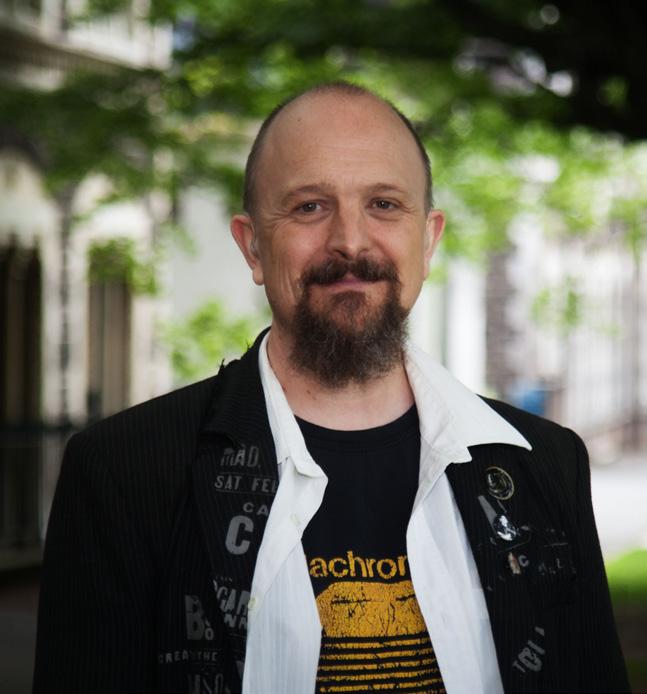
Light is an effective tool for conveying emotion in theatre. How does the lighting journey interact with the events of the story?
Light will be the first visual thing an audience will encounter when a show starts. Therefore, there is meaning to be found immediately in the light we see. Colour, brightness, angles all contribute to mood and atmosphere. Are we somewhere environmental? In which case what does the light tell us about where we are. Is it dim and overcast? Indoors? Daytime? Or is it night? All this information is to be found in the light and as the play progresses, we will be guided by our interpretation of the light. My job as the lighting designer is to assist the director in her story arc, and to help convey the passage of time and location through the story. Some parts of The End of the Golden Weather are filtered through the lens of memory, so the image we see on stage may be heightened through colour, tone or by dramatic contrast. Memory, after all, can shape our view of our past.
What challenges arise designing lighting for a theatre that has never been used before?
It must be said that to be designing the first show in the brand-new Court Theatre is quite an honour. I am aware of the enormous journey it has taken to get to this point in time and I see this an opportunity to honour those who have put the mahi into creating this very special theatre. The challenge for all of us in the lighting team is to get a sense of how the new untried
lighting positions will work, and how the new intelligent LED lighting fixtures respond to the demands of the show. I am very confident that everything has been carefully though about when it came to the needs of the new theatre so it will be a real delight to be playing with new toys!
How does lighting interact with other elements of the production design? What was the collaboration process like?
I have worked with Lara, (director) and Mark, (set design) before, and we seem to have a shorthand now on how we can get the best of each other’s work. I understand Lara’s process and how it layers itself and builds up towards the production week. That we may be making changes even after the dress rehearsal! I am not worried about that because I appreciate that theatre is a living artform and requires constant monitoring as the show progresses. Mark brings what seems to be a straightforward design idea to the fore but really, he has thought about the spatial relationship with the full space. This is key for me to know why he has designed the way he has for the production but to also ensure that I contribute correctly to his vision, as well as Lara’s. There’s no point putting in a carefully painted set that is reflective of the sun-bleached timber of Takapuna beach if I come along and throw purple light all over it! As a lighting designer I consider myself a bit like being the icing on a well baked cake. It can look good, or it can look bad! I hope you have found the design to be the former.
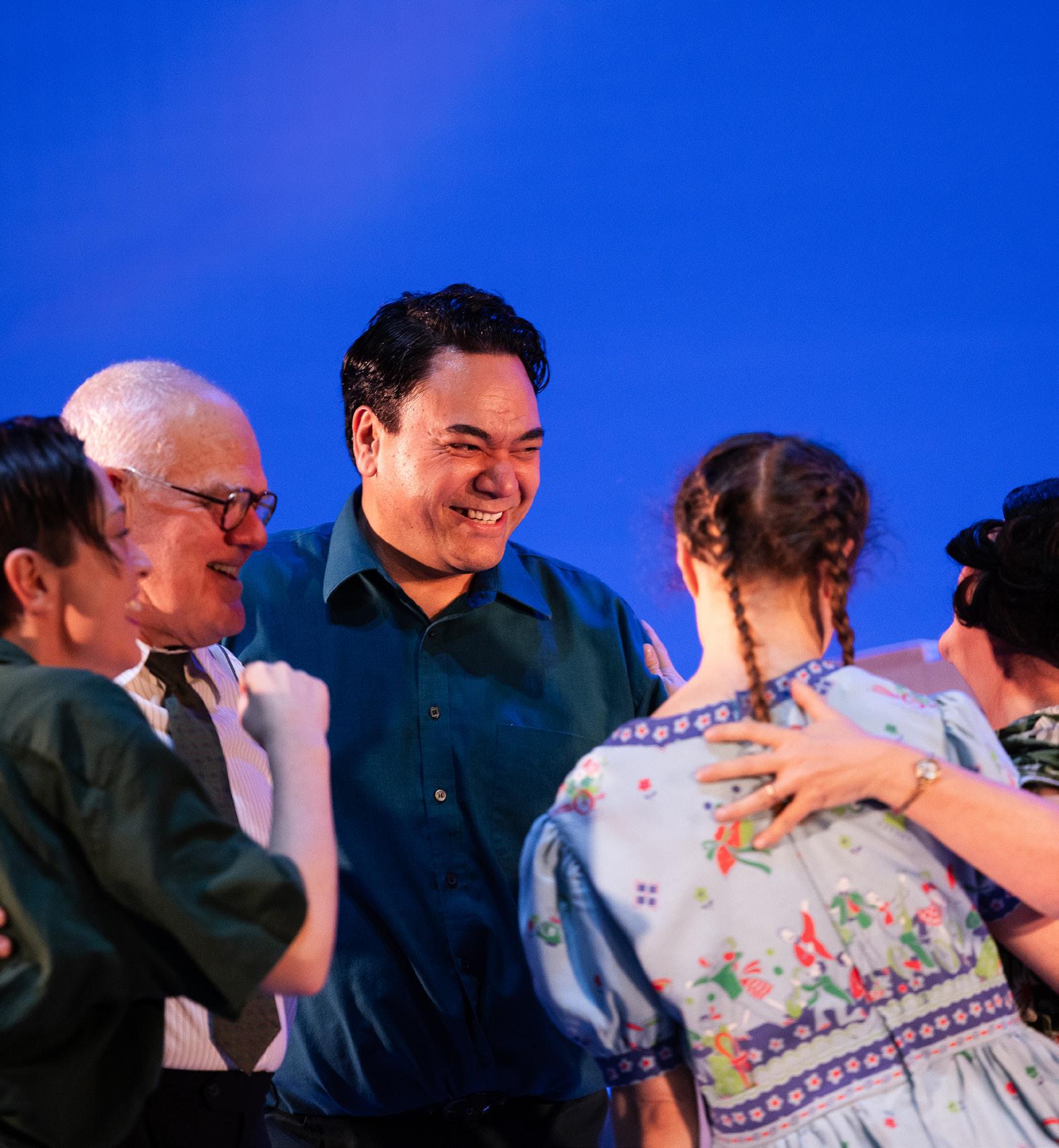


One of the most exciting aspects of viewing live theatre is seeing how the designers bring to life the written play on the stage. Each new production will take a different approach to design, which can highlight themes and ideas that are recognisable to current audiences. In her interview Macgregor states that she wants to explore the idea of nostalgia through her production. She is also highlighting key themes; What it means to be a man in New Zealand; identity, (toxic) masculinity, loss of innocence, individuality, coming of age and memory. Use these activities to explore how the designers created this vision and Mason’s world on stage:
Macgregor notes that there are two worlds at play in The End of the Golden Weather. In small groups take one technology each: sound, lighting, set, props, costume. Make comprehensive notes about how the designer evoked the world of The Narrator (now) and the world of The Boy (then). Use the following bullet points to guide your brainstorm discussion:
• Read the designer’s interview, circling or highlighting important ideas. Add important quotes to your notes
• Identify how “then” and “now” are created with this technology
• Choose specific moments that highlight this use of technology and write detailed notes of how this looked on stage
• Sketch and annotate
• Write a brief summary of how a sense of nostalgia is created through the use of this technology
Colour in set, lighting and costume helps to create the world of the play for an audience, immediately drawing attention to the time, place and atmosphere of the story being told. As a class, explore how colour was used by the designers to weave a nostalgic feeling throughout the performance, link to important themes and motifs, and to establish a firm sense of time and place.
Use Bus Stop Brainstorming to get your ideas on to paper:
• Divide the class into three groups, lighting, costume and set
• Each group has a big piece of craft paper and a pen for every member of the group
• For 10 minutes individually write down as many ideas and examples from the performance of how that technology used colour to establish the world of The End of the Golden Weather
• Spend 5 minutes as a group discussing the ideas or examples you have individually added, elaborating where you can
• Each group then rotates to the next technology, where they spend 5 minutes discussing what the previous group has written and 5 minutes adding new ideas/examples
• Once each group has rotated around all three technologies, come back to your original technology. Spend 10 minutes discussing and collating the main ideas

How did you approach bringing the character of Boy to life?
Thankfully, Bruce Mason, the writer, has included plenty of clues as to where the boy sits, so to speak. That and the fact that the narrator is the adult version of the boy means that we know where the boy starts and where the boy ends up. All I have to do is put the clues together in the script to make the journey make sense.
Are there aspects of the character that you relate to? Were there any challenges in relating to Boy?
The play is a very condensed version of the end of childhood, or “the Golden weather” to put it another way. I think the coming of age aspects of the play are relatable to most people. The fact that the boy is the eldest sibling is relatable along with the idea that the boy is an artistic soul in a family that doesn’t really express themselves that way.
Physicality was the toughest challenge. Twelve year old boys are peppy and nimble which was definitely a tough aspect to try and work around.
How do you handle the balance between the innocence of Boy and the darker, more complicated aspects of his life?
Again, thankfully the script tells us exactly what we need to do. Finding the core of the character as an actor is the most important thing in my opinion. Once you have that, no matter what situation the character finds itself in, refer to the core and do what you think the character would do.
How do you interpret Boy’s journey throughout the play?
I interpret it as the greatest hits of what forced the boy into adulthood. It’s a painful process but one we all have to undertake eventually.
What is your favourite scene to perform as Boy, and why?
I love the scene with Mr and Mrs Atkinson. There’s something almost absurd and fairytale-like about the situation. Anna and Mark are just a pleasure to play off.

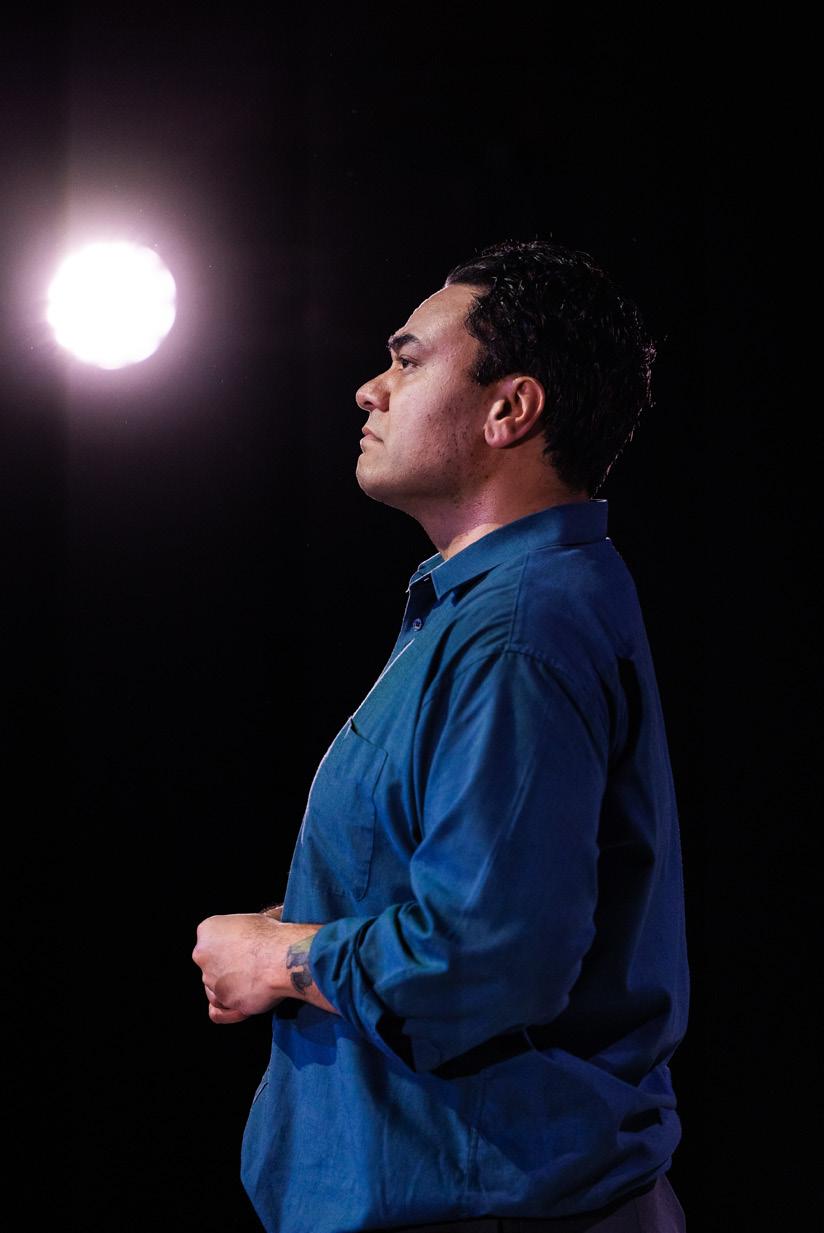





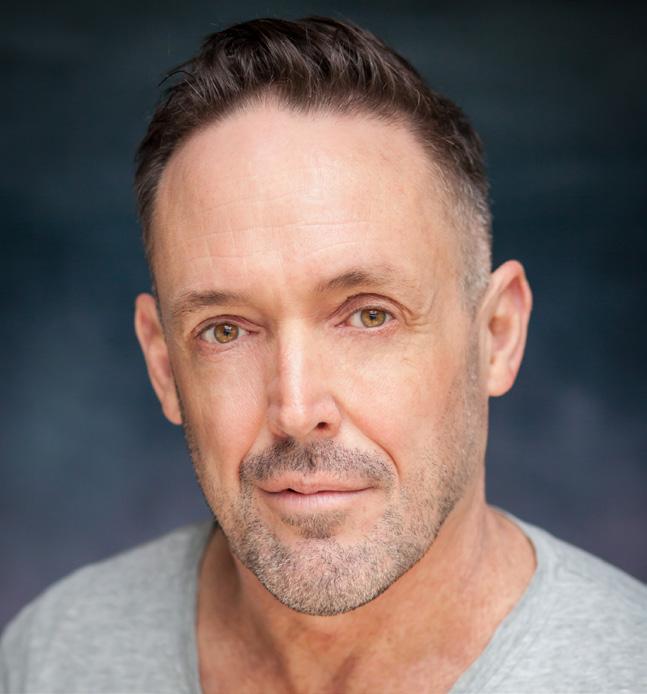


How do you navigate the complexities of portraying a character with a disability?
With any character, the first thing I do is look for as many clues in the script that can help with understanding how they act and react in the play. There’s lots of them in The End of the Golden Weather. Firpo is described as, “always talking as if he were someone else”, and the persona of Firpo must have been created for a reason. As we learn more about him in the second half, we discover that he has been laughed at a lot by children, and this laughter “takes your skin off, leaves you all bare”. This has led to ongoing trauma and the first thing he asks the boy is whether he is good and kind and whether he will laugh at Firpo. The personality he has chosen to become is a famous Argentinian boxer and he is obsessed with becoming fit, big and strong to “wipe those smiles off”, which suggests he has been bullied and tormented for a good deal of his life. It seems likely that persona of Firpo he has adopted is a way to protect himself from the abuse, trauma, bullying and neglect he has suffered from due to his disability. Firpo goes into trances and stares and seems to have memory gaps which suggest he is suffering from some form of dissociative identity disorder. We also find out he’s been in an asylum, that he’s tried to take his own life, that he’s been locked away from the sun. His disability is never actually named, but his repetition of words and phrases, repetitive behaviours/ stimming, sudden outbursts and violent behaviour would suggest he has some form of autism. Doing research on autism and common signs and symptoms of autism is important but the disability cannot define the character. It’s understanding the
trauma, fears, hopes and dreams of the character to try and create a sympathetic, heroic, tragic and most importantly believable portrayal of a very complex man.
Firpo seems to be a character who challenges the boy’s sense of reality. How do you bring out that conflict in your performance?
The character of Firpo’s real name is Tim Barlow, but to cope with the trauma of being Tim Barlow, he has created this alternate identity of Firpo who is Tim’s fantasy of everything he wants and needs to be to became the ‘Made Man’, a happy, powerful and successful version of himself, who nobody would dare laugh at or look down on. It is glaringly obvious to the adult characters in the play that this skinny, eccentric man in a torn bathing suit will never compete in the Olympic Games, but the conviction of his belief and the depth of his desperation make it believable to the boy. That conflict and the challenge to the boy’s sense of reality can only occur if the audience believe that Tim believes he is Firpo with every fibre of his being. The fantasy of being Firpo must always come across as completely real to Tim, it is his truth, no matter how ludicrous it seems to everyone else. And if it’s truthful for Tim, it becomes truthful for the boy. The boy, because he is still open to imagination and wonder will join Tim in the fantasy and attempt to help him. So, as an actor I need to totally believe I am this mythical character of Firpo but, at the same time, keep the character of Tim alive as well, because without Tim, Firpo doesn’t exist, and vice versa. The belief in the fantasy must come from every fibre of Tim/ Firpo’s being as it’s essentially a psychological survival mechanism, it’s the only way he can deal with the trauma of being Tim.
What do you think Firpo represents in the play? How do you bring that symbolic weight into your performance?
I think at his core Firpo represents injustice. He is laughed at, belittled and institutionalised through no fault of his own. His difference to the accepted norms of a supposedly ‘civilised’ society make him scary to others and the only way they can deal with their fear, intolerance, ignorance and unwillingness to accept someone who is ‘different’ to themselves is to grind him down physically and mentally and ultimately “hide him away from the sun”, out of sight out of mind. I don’t really think about bringing that symbolic weight into my performance. My focus is on creating a truthful, three-dimensional character, a character who is
dealing with profound trauma but who still has hopes and dreams. I think we all have fantasies about the person we wish we were, or hope to be, we all have our trauma and insecurities that we keep hidden, and hopefully when the audience see Firpo they see a little bit of themselves. If my performance is truthful then the audience will overlay their own symbolic and thematic weight onto Firpo and the play, and this may be different for different people, but that’s absolutely fine!
What does playing this character mean to you as a performer?
Firpo is an iconic role in an iconic Kiwi piece of theatre. I remember seeing the film when I was young and one of the few things I can remember from it is the “Gidday, boy! How’s tricks?” line from Firpo that is repeated throughout the film. He’s a very complex character, a character playing another character to survive, who is simultaneously heroic, comedic and tragic. It’s an absolute privilege as a performer to play this role, especially in the first show in the new Court Theatre, a place that’s been a massive part of my life for over 30 years.


In your portfolio, exam revision or when exploring The End of the Golden Weather as part of your internal assessment learning, you will want to think deeply about the characters and their purpose within the narrative. It is important to be able to link characters to the themes, symbols and motifs of the play in your discussions in class and to be able to express your ideas in written, oral and sketch format. When thinking about characters you will want to link your examples to the Elements of Role, Time, Place, Focus and Tension, as well as thinking about the four Drama Techniques; Body, Voice, Movement and Space. It is also important to consider how these characters link to, discuss or represent the wider context of the play. This is where you will consider the social, historical, political and geographical purpose of these specific characters.
Use the following activities to help you explore as a class, in groups and as an individual.
• Choose an interview to read
• Circle or highlight ideas that interest you or you think will be helpful to support your discussions, revision, portfolio collation
• Get into pairs or small groups and share what you have circled or highlighted and explain why. Make notes or a brainstorm to record your ideas
• Choose a scene that highlights how the character (s) that actor plays connects to ideas you have identified. Brainstorm how you might talk about the scene, describing what was physically happening on stage for that character. You could present this to the rest of the class as a: (make sure you save a copy of whatever form you complete this task in)
• Fleshed out brainstorm
• A verbal presentation with written prompts
• A written response
• Acting out a scene and explaining what you are doing.
Summarising the narrative:
In pairs or small groups fill out the summarising narratives chart linked below. Add details from the play, from the performance and include individual thoughts and ideas. You could also add quotes from the performance, to enrich this for revision, discussion or portfolio collation later in the year.
Summarising (narratives)
After you have filled out the summarising narratives chart use the information you have collated to explore how the characters link to and personify the following themes that Lara Macgregor has identified. You could take one theme per group:
• What it means to be a man in New Zealand; Identity
• (Toxic) masculinity
• Loss of Innocence
• Individuality
• Coming of Age
• Memory
Ensure you identify the following in your discussion, creating detailed notes, sketches and annotations:
• Specific scenes from the performance
• Quotes or lines from the play
• How the actor(s) used their techniques; voice, body, movement and space in the moments you have identified
• Explain interactions between characters that were important in exploring the theme, thinking about proximity, body language, use of voice, eye contact and how this builds tension, mood and / or atmosphere
• Quotes from the actors interview in this pack or from the post show forum
• What you felt at the time, what you have thought about since
• Links to current social or political ideas - what would these characters look like today? Who do they remind you of?
Choose either The Boy, Firpo, The Narrator or another character you found compelling, working in pairs, complete the following character chart for that character:
A super-objective, focuses on the entire play as a whole. A super-objective can direct and connect an actor’s choice of objectives from scene to scene. The super-objective serves as the final goal that a character wishes to achieve within the script.
Individual activity:
The objective is a goal that a character wants to achieve. This is often worded in a question form as “What do I want?”
An objective should be action-oriented, as opposed to an internal goal, in order to encourage character interaction onstage. The objective does not necessarily have to be achieved by the character and can be as simple as the script permits.
Actions are referred to as how the character is going to say or do something. Actions are how a character is going to achieve their objective.
Obstacles are things that are stopping the character from achieving their objectives or super objectives.
For homework, using all of the notes and ideas you have collected, respond to the following prompt. Weave in quotes from Lara Macgregor’s and the actor’s interviews, specific moments from the performance and your own ideas, thoughts and feelings.
“Discuss Firpo and The Boys relationship. What is the purpose of depicting this relationship on stage? Why does a 2025 audience need to see this relationship?”
References:
Literacy resources sourced from the Drama Literacy Pedagogy Guide written by the Ministry of Education: NCEA Drama Literacy Pedagogy Guide
For further Literacy and Numeracy resources: NCEA Literacy Planning Resources
https://www.nzonscreen.com/title/the-end-of-the-golden-weather-1991 (Trailer plus 10 min excerpt from film)
(Please note: these activities are some ideas of how to approach unpacking a play with assessment in mind. Your teacher will need to support you to explore Explanatory Note 2 and how Manaakitanga will be woven through your assessment work. This approach needs to be appropriate to your classroom setting. Reference the standard here: https://ncea.education.govt.nz/arts/drama/1/1?view=standard)
If you are a Level One student you may be exploring learning and working towards Achievement Standard 1.1: Explore the Function of Theatre Aotearoa. This standard links towards the significant learning “contribute to theatre Aotearoa and understand that drama is a way to explore and reflect on whakapapa.” Your teacher will have chosen texts that are part of the Theatre Aotearoa canon for you to explore in class and The End of the Golden Weather is an excellent example of such a play text. Seeing a live performance of a play you are studying and exploring in class helps you to connect to the playwright’s intention for the work and experience how a performance might heal, educate, entertain or transform an audience. Whether you are a Year 11 student or in a younger or older year level, this section of the pack aims to extend your understanding of theatre and its function.
The End of the Golden Weather was originally written as a one man play by Bruce Mason and explores a range of quirky characters, as well as historical events as the summer comes to a close in Aotearoa New Zealand. Raymond Hawthorne then adapted the play for a larger cast. This play is an excellent example of adaptation over time and remains current as it reflects aspects of society, history, politics and reflects locations the audience will be familiar with. It explores New Zealand culture at a specific point in history, evokes a sense of nostalgia and explores human stories and allows the audience an evolving perspective. Linking to the Big Idea Titiro whakamuri, kōkiri whakamua – Drama is influenced by whakapapa and is a way to respond to and share identity, culture, and perspectives
Function in this section refers to: the plays ability to heal, educate, entertain or transform an audience.
In small groups or in pairs, brainstorm, research and record responses to the following questions. (A mode of recording has been suggested for each question in order to enrich your literacy skills):
The function of The End of the Golden Weather: Brainstorm with pen and paper. Ensure you explore and debate the four words encompassed in the function and then construct a written response that focuses on a specific scene.
• What ideas, themes or messages are being communicated to the audience?
• What impact is that having on the audience?
• How are these ideas healing, educating, entertaining or transforming the audience?
• Can you connect this to a specific scene or moment from the performance?
Connection with the audience: Record a verbal discussion where you discuss the following questions. You could brainstorm the questions first, but it is important you don’t script your response.
• Who do you think the intended audience is and why? Who do you think Bruce Mason wrote this for and why? Explore the history of this play through research.
• Why do you think Raymond Hawhorne chose to adapt this for a larger ensemble? How does this support the function of the play?
• What draws you into the story? The actors, the design, the writing, the themes and ideas? Discuss why.
• What were you feeling throughout the performance?
• What have you thought about since?
You could use the following literacy resource from the NCEA website to support your thinking and exploration: Purpose and Audience Analysis
Communicating function through drama techniques: these activities focus on exploration using the four drama techniques; Body, Voice, Movement and Space
• Using the prologue of the play, work as a whole class to create the world of Te Parenga in those opening moments. Focus on ensemble conventions such as chorus, canon, repetition. Use your body and movement to create the landscape and environment. Add interesting vocal elements and share lines between you. Give a sense of pace and movement, filling your entire stage space and focus on interesting formations and patterns within the space.
• Discussion after performance: how does the prologue of The End of the Golden Weather establish the function of the play?
• Explore a scene that captures the function of the play. Divide into groups, each group chooses a key scene from the play that captures the function of the play. As a group, focusing on your use of body, voice, movement and space block the scene.
• When it comes time for performance, sit the audience in the round
• Establish why you chose this scene and whether your group thinks it heals, entertains, transforms or educates
• Perform your scene
• Perform it for a second time, but this time the audience is allowed to stop and start your performance, making suggestions to strengthen how the function is highlighted
• Regroup after the performance and discuss what you learnt from this exercise and why it is helpful to have an outside eye when developing your understanding of the function of End of the Golden Weather
Practical exploration and making connections:
• Explore the purpose of The Family, The Boy and Firpo within the narrative of The End of the Golden Weather through Hot Seating. As a class:
• Collate a series of questions that you think would help to understand a character’s purpose.
• Divide into groups, each group focusing on a different character.
• Take turns playing that character in the Hot Seat, answering the questions in role.
• Once you feel like you have the answers to all the questions, choose a way to present your work back to the class.
• Discuss how this character supported the function of The End of the Golden Weather.
• Choose one of the character’s outside of the core family or Firpo, that you found compelling or impactful. Discuss why as a group.
• Create a Role on the Wall for this character:
• Draw the outline of your character - could be a gingerbread man shape, stick figure, etc.
• On the outside you will note the external drama techniques you see the actor using in a specific moment, that communicate the function. Use of body, voice, movement and space
• On the inside you will think about or imagine what might be driving these choices; emotions, motivations, subtext
• Discuss who this character represents in the play, how their part in the narrative might heal, educate, entertain or transform. What do they make you think about and feel? Do their actions within the play evoke a strong reaction, if so what and why?
• Develop a short scene that provides more details about this character’s life, focus on a
strong use of conventions and elements
• Prior to performance explain how your short scene connects to the character you have chosen. How does your devised scene help you to explore the function of The End of the Golden Weather?
• Make sure that you choose conventions and elements that will communicate your ideas in a coherent way
• Choose a moment in the performance where you could add more information about an event. This could be prior to the play beginning, during the narrative or what happened next.
• Develop a short scene using conventions and elements
• Discuss together how this scene extends on ideas in the play
• Prior to performance explain how your short scene heals, educates, entertains or transforms the audience. Discuss how you have used conventions and elements to communicate this.
Heading towards assessment:
• Choose a scene that you felt highlighted the function of the play
• Block and rehearse the scene for an audience
• As you rehearse make choices about your techniques as an actor that will communicate the function of the scene to your audience
• Think about how elements can be enhanced and what conventions could be used in the blocking
• If you could use technology, what would it be? If you have access to it, have a play. If you don’t then express a few ideas to the audience prior to performing
• Perform your scene for your peers and gain feedback.
• Justify your choices to the audience and explain what you intended to communicate
• Discuss whether your intention for the performance was communicated and understood. Gain feedback and advice
• If you have time you could implement any feedback given to enhance how you communicated the function.
References
Drama | NCEA
Explore the function of theatre Aotearoa | NCEA